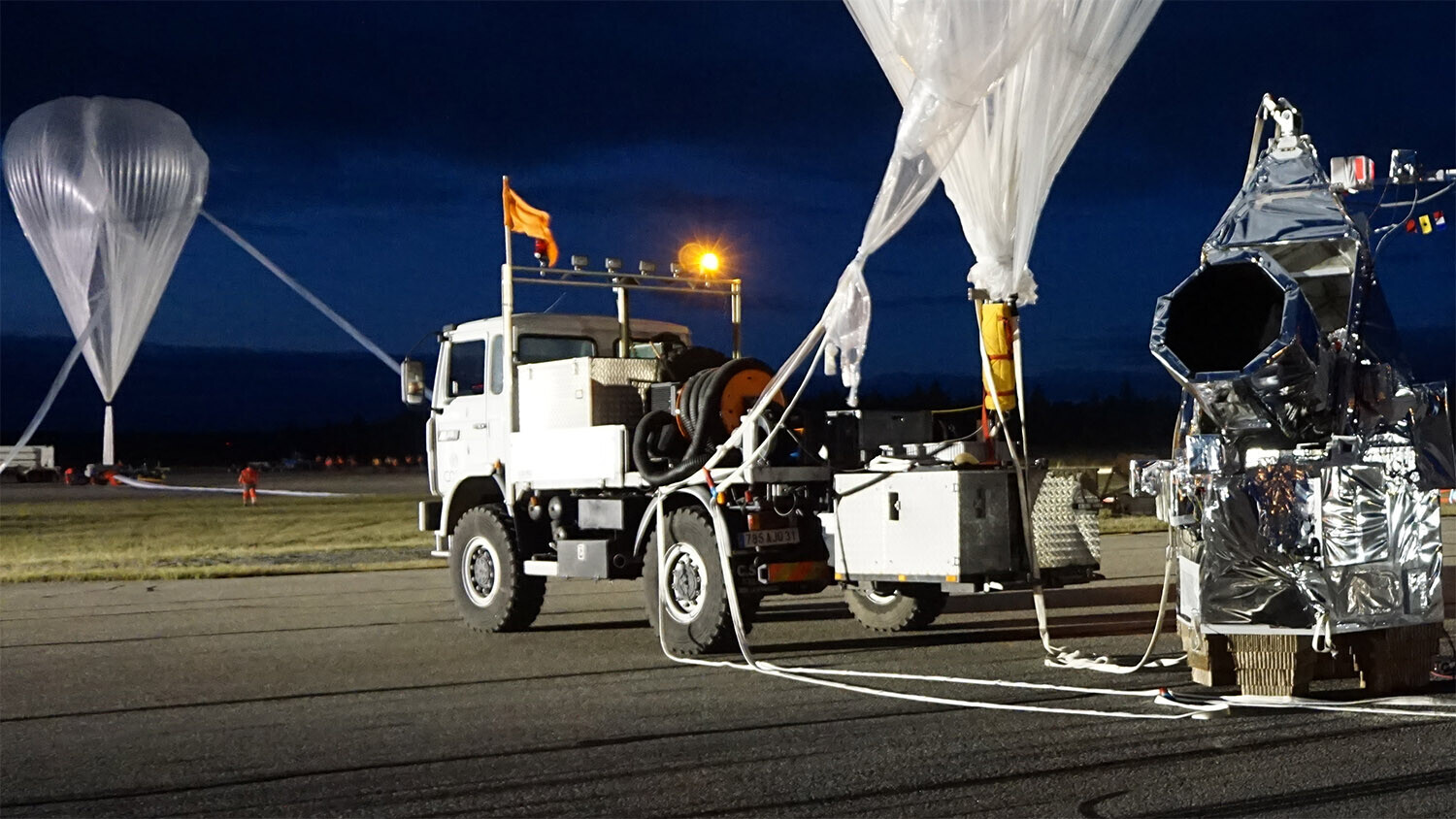All Articles for
Superpressure Balloons
A superpressure balloon is a style of aerostatic balloon where the volume of the balloon is kept relatively constant in the face of changes in the temperature of the contained lifting gas. This allows the balloon to keep a stable altitude for long periods. This is in contrast with much more common variable-volume balloons, which are either only partially filled with lifting gas, or made with more elastic materials. In a variable-volume balloon, the volume of the lifting gas changes due to heating and cooling in the diurnal cycle. The cycle is magnified by a greenhouse effect inside the balloon, while the surrounding atmospheric gas is subject to a much more limited cyclical temperature change. As the lift gas heats and expands, the displacement of atmospheric gas increases, while the balloon weight remains constant. Its buoyancy increases, and this leads to a rise in altitude unless it is compensated by venting gas. Conversely, if the balloon cools and drops, it becomes necessary to release ballast. Since both ballast and gas are finite, there is a limit to how long a variable-volume balloon can compensate in order to stabilize its altitude. In contrast, a superpressure balloon will change altitude much less without compensation maneuvres. Since the volume of the balloon is more constrained, so is the volume of air displaced by it. In accordance with the Principle of Archimedes, the upwards force on the balloon is equal to the weight of the displaced ambient gas. But the weight of the atmospheric gas is reduced as the balloon rises, because its density diminishes with increasing altitude. So the force pushing the balloon upwards diminishes with altitude and at some particular altitude the upwards force will equal the weight of the balloon: the balloon will be stable in a finite equilibrium altitude range for long periods. The disadvantage is that such balloons require much stronger materials than non-pressurized types. Superpressure balloons are typically used for extremely long duration flights of unmanned scientific experiments in the upper atmosphere, where atmospheric gas temperature is quite stable through the diurnal cycle. In 1985 such balloons were used for aerobots flying at an altitude of approximately 50 km in the atmosphere of Venus, in the international, Soviet-led Vega program. In February 1974, Colonel Thomas L. Gatch Jr, USAR attempted to make the first crossing of the Atlantic by balloon in a superpressure balloon named Light Heart. Following the loss of at least two of the ten balloons which provided lift and after deviating substantially from the course that Colonel Gatch had plotted to take advantage of the jet stream, the last reported sighting of the Light Heart was 1,610 km west of the Canary Islands; no further trace of the aircraft was ever found.
